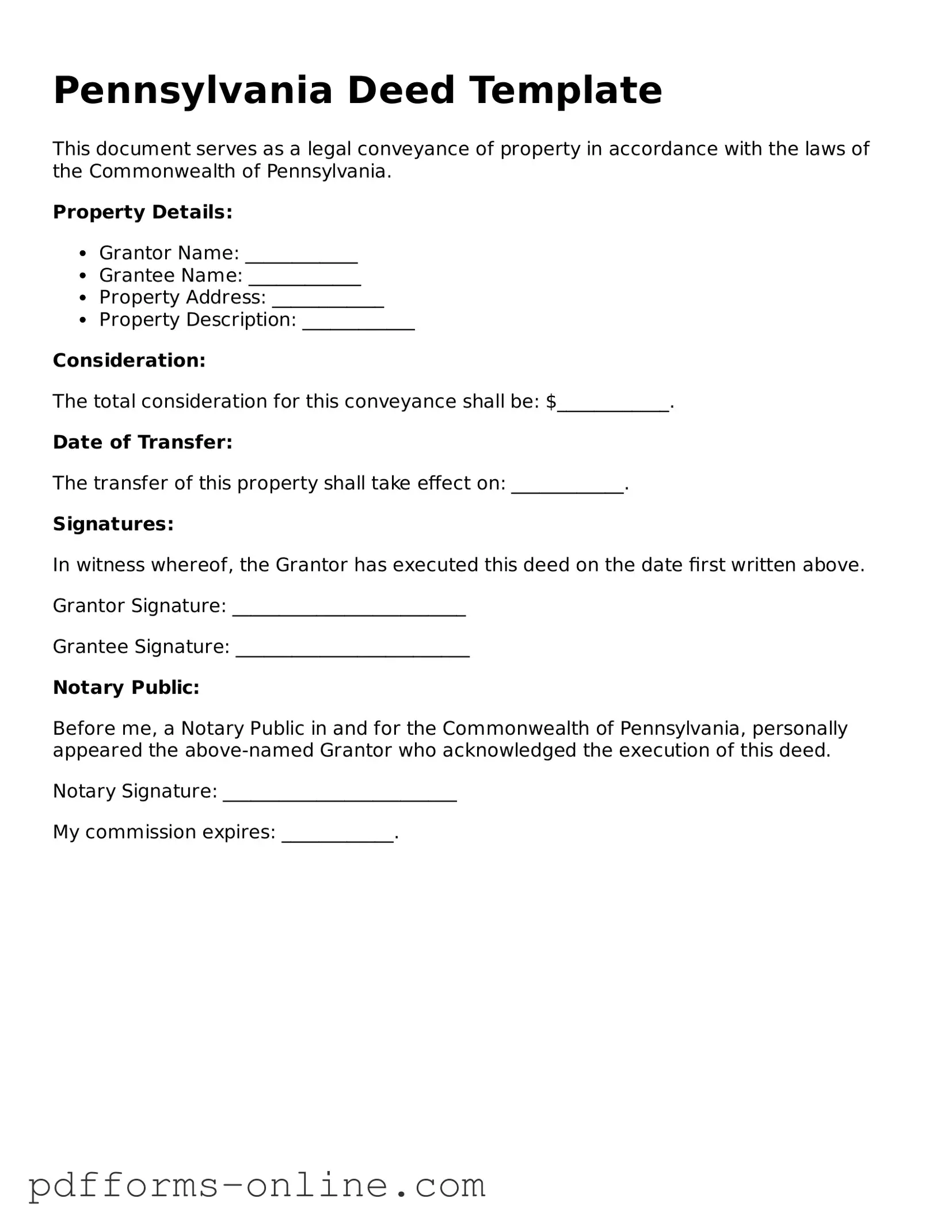Valid Pennsylvania Deed Template
A Pennsylvania Deed form is a legal document used to transfer ownership of real property from one party to another within the state of Pennsylvania. This form outlines essential details such as the parties involved, the property description, and the terms of the transfer. To ensure a smooth transaction, it is important to fill out the form accurately and completely.
Ready to take the next step in your property transfer? Fill out the Pennsylvania Deed form by clicking the button below.
Open This Deed Online
